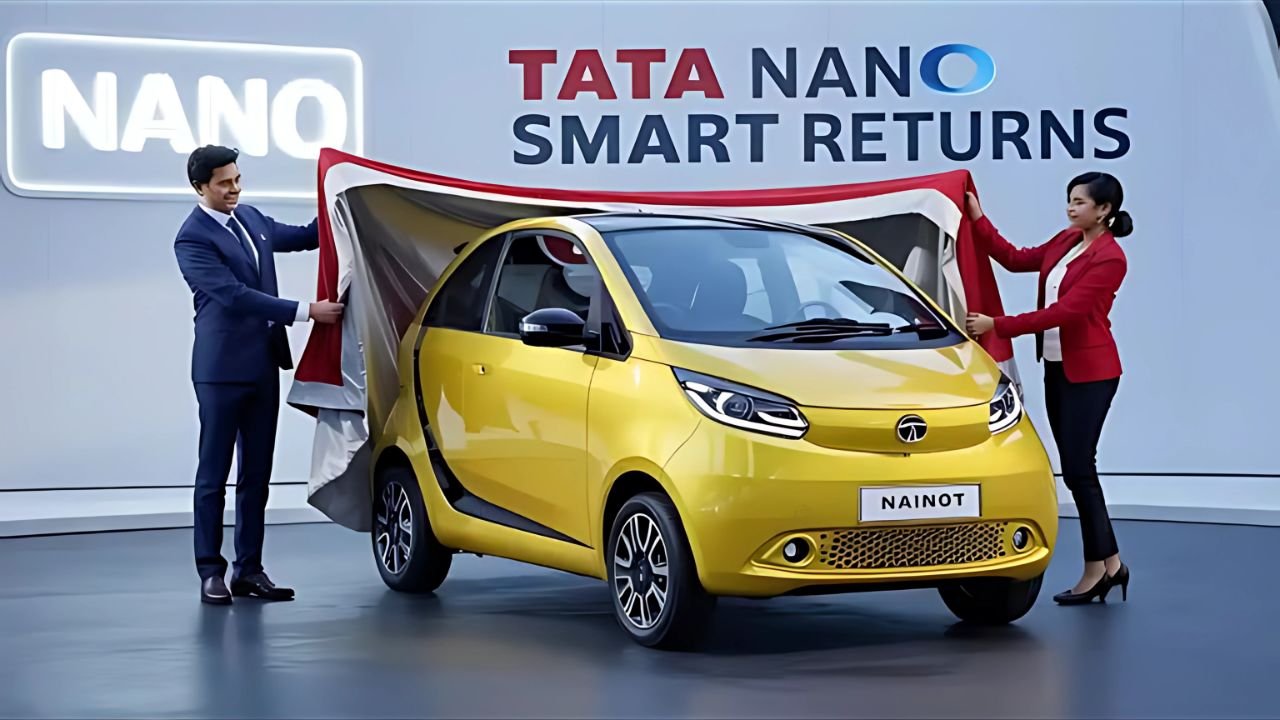The Tata Nano has always held a special place in India’s automotive history as the “people’s car.” When it was first launched, the Nano aimed to give every Indian family access to affordable personal mobility. While it eventually disappeared from the market due to declining demand and safety concerns, Tata Motors seems ready to bring it back in an all-new avatar. Reports suggest that the Tata Nano 2025 is under development and could make its comeback by mid-2025. This new version is expected to combine the original charm of affordability with modern design, efficiency, and improved safety—three factors that can make it a game changer once again.
The most talked-about aspect of the upcoming Nano is its unbelievable mileage figures. Media leaks hint that the 2025 model could deliver up to 40 km per litre, which would make it the most fuel-efficient petrol car in India. In a time when fuel prices are constantly rising, this could become the Nano’s biggest selling point, especially for students, first-time buyers, and families looking for a budget-friendly daily commuter. Paired with a small yet efficient 624cc, two-cylinder petrol engine and a 4-speed manual gearbox, the Nano will remain city-focused. It might not be the most powerful car for highway journeys, but it promises smooth, practical, and cost-effective rides in crowded Indian traffic.
Design-wise, Tata is expected to keep the Nano’s compact dimensions intact, making it the perfect hatchback for narrow lanes and tight parking spaces. However, the new model will not look outdated. Updated styling elements such as sharper headlamps, a sportier front grille, and brighter body colors including Yellow, Red, and Blue are expected to give it a refreshing appeal. While its ground clearance might still be modest, requiring drivers to be careful on uneven rural roads, its urban usability will remain unmatched. For city dwellers, this compact size could be its biggest strength.
Inside the cabin, the new Nano will likely remain simple but far more practical than its predecessor. Tata may include a basic touchscreen infotainment system, manual AC, power steering, and central locking in higher trims. While it may not match the premium features offered in cars like the Renault Kwid or Tata Tiago, the interior will be designed to focus on functionality, affordability, and comfort for daily use. This makes it especially suitable for college students and nuclear families who simply need a reliable, cost-effective car without unnecessary luxury features.
One of the biggest criticisms of the old Nano was its lack of safety. Tata Motors has learned from that and is expected to bring the 2025 version up to modern safety standards. Features such as dual airbags, ABS with EBD, and rear parking sensors are likely to be included, ensuring better protection for drivers and passengers. With these upgrades, the Nano will comply with the stricter safety regulations now mandatory in India, making it a much more dependable choice than before.
In terms of pricing, the Nano 2025 is expected to launch in the ₹2.5 lakh to ₹3.5 lakh range (ex-showroom). This will make it India’s most affordable passenger car and place it in direct competition with entry-level hatchbacks such as the Maruti Suzuki Alto K10 and the Renault Kwid. While the Alto and Kwid offer larger engines and slightly more features, their pricing is significantly higher. Even Tata’s own Tiago sits in a higher segment with a starting price of around ₹5 lakh. The Nano’s unbeatable advantage lies in its combination of low cost and record-breaking mileage, which will make it extremely attractive for cost-conscious buyers.
Of course, there are some limitations. The Nano may not deliver strong highway performance, and its ground clearance might still disappoint those who drive on rough terrains. Additionally, its feature set will be basic compared to rivals. However, for the audience it is targeting—urban commuters, budget buyers, and students—these compromises may not matter much. For them, affordability, fuel efficiency, and ease of driving in cities matter more than premium features or high-speed performance.
If Tata Motors goes ahead with this relaunch, the Nano 2025 could once again redefine the concept of a budget-friendly car in India. With its practical design, modern safety features, and game-changing mileage, the car has the potential to revive the same excitement that the original Nano once created. While premium hatchbacks will still attract buyers who can spend more, the new Nano could become the first choice for millions of Indians who dream of owning a personal car without breaking the bank. In short, the Tata Nano 2025 looks ready to reclaim its position as the true “people’s car,” offering a smart mix of affordability, practicality, and efficiency for the modern era.

